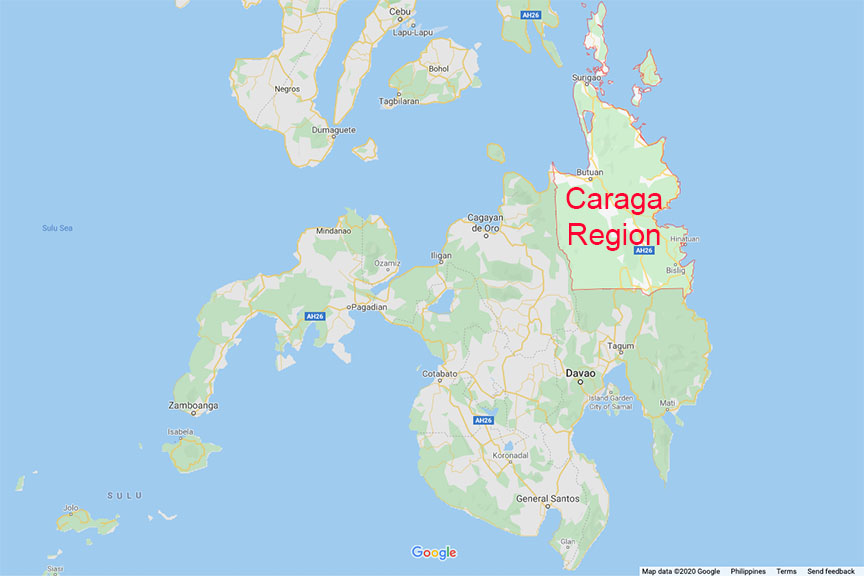
DAVAO CITY (MindaNews / 19 July) — Three local government units in Mindanao aim to improve their current power situation through a new potential renewable energy source in agreement with a French-based energy company.
The provinces of Agusan del Sur and Surigao del Norte in the Caraga Region and Zamboanga City in the Zamboanga Peninsula signed memorandums of cooperation (MOCs) with French company Hydrogen de France (HDF) Energy on Friday morning, aiming to establish three more potential hydrogen power plants in the island “in the next 25 years.”
Citing the “booming” economy of Siargao Islands in Surigao del Norte, provincial administrator Rise Faith Recabo said they need additional power sources to keep up with the province’s power demands and to remedy their intermittent blackouts.
“We have been experiencing, for the longest time, I believe, high power rates for our electric bills. Especially in Siargao Islands, the electricity there is really a problem, and this problem has been ongoing for the last five years,” Recabo said in a press conference at Acacia Hotel on Friday afternoon.
For Agusan del Sur Provincial Planning and Development Office head Trisha Goloran, the project can be beneficial. Aside from addressing their own intermittent blackouts, their province is “on a growth trajectory,” and they are tasked with hosting the Palarong Pambansa (National Games) in 2025.

Zamboanga Economic Zone chair Raul Regondola said they are ready to allocate a 40-hectare land for the potential hydro-power plant, as it “can lower electricity rates within their area.”
“When the HDF is already in operation, it will distribute directly to our locators… We have several manufacturing plants inside that need electricity. When the electricity [from the national grid] travels to Zamboanga City, it will reduce the voltage requirement… That’s why we experience a lot of brownouts, even inside our eco-zone,” Regondola said.
Meanwhile, Assistant Romeo Montenegro, Deputy Executive Director of Mindanao Development Authority said the agency would ensure commercial and technical viability in key power projects like this, especially since HDF is plotting their projects in Agusan del Sur, Surigao del Norte, and Zamboanga City.
Agusan del Sur and Surigao del Norte are part of the Caraga Region, the easternmost region of Mindanao. Zamboanga City is part of the Zamboanga Peninsula, which is the westernmost part of the island.
Montenegro said these locations are far from the northern and southern parts of Mindanao, where most of the power plants and power grids are located, such as the Agus Pulangi Hydropower Complex in Lanao Provinces and Bukidnon, and coal power plants in Misamis Oriental and Davao Occidental.
The official said the distance of the three provinces from the main grid could be crucial for the power quality they receive from the power plants.
“The electricity travels along a line just like water… but for electricity, it entails a certain degree of frequency, as there is no room for variation of power supply beyond what is set, otherwise, it will result in fluctuation, not in power supply, but in power quality,” he said.
“Their [electric cooperatives] are well-contracted, but imagine Zamboanga buying electricity all the way from Davao Occidental. Imagine that route of electricity… and therefore, you see the issue of fluctuation,” he added.
In a press conference, HDF said they are engaged in the “development, financing, building, and operating multi-megawatt power plants that are capable of producing firm power” from renewable sources of energy, such as solar, wind, and water, using their hydrogen-centered systems.
Mathieu Geze, HDF Energy president-director, said the MOCs will serve as “information-sharing, stakeholder coordination, and technical validation of the company’s grid assessment and feasibility studies,” a part of the process in the potential establishment of hydrogen-powered power plants.
He added they have yet to determine how much electricity they might produce or distribute, but on average, their plants produce about 10 megawatts of hydrogen-based power. These power plants might be budgeted “at an average of $1 billion per project.”
The French-based company also targets putting up a total of 10 hydropower plants in the country.
“By implementing such cooperation agreements at this stage, we make sure that the key stakeholders of power plants will be cooperating with us from the beginning to find the right location, the right area, close to the [national] grid, to ensure we have the right sizing for the electric cooperative… and this cooperation with Mindanao is very important,” Geze said.
HDF earlier signed MOCs with the local government units of Olutanga, Mabuhay, and Talusan in Zamboanga Sibugay province last May 7, 2023, to put up similar hydrogen power plants, which will cost $5 billion. (Ian Carl Espinosa/MindaNews)
0 Comments